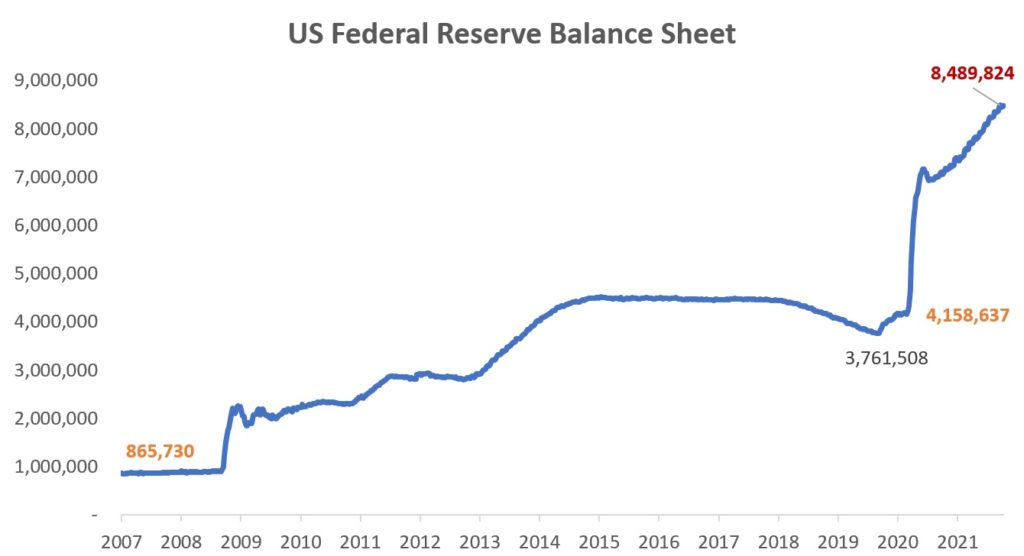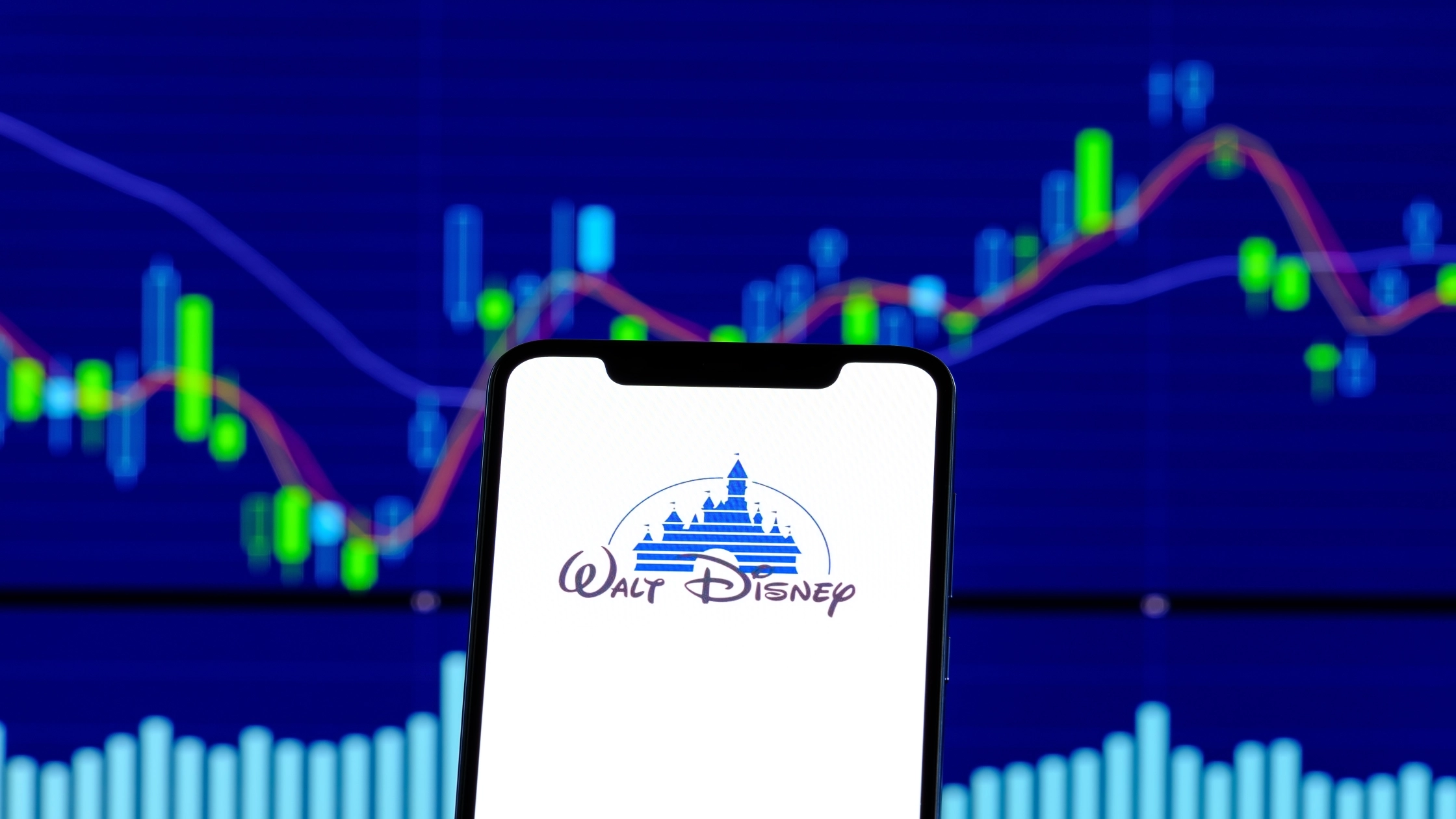Market talk that the US Federal Reserve’s “tapering” will start in November is gaining momentum.
This is as Fed officials indicate that they’re ready to pull back some of the stimulus that they’ve provided during the pandemic.
On Tuesday, Fed Governor Christopher Waller said that the Fed should begin tapering its bond-buying programme next month (November).
He, however, also mentioned that interest rate rises are probably “still some time off”.
Fed officials are set to wind down the bond buying programme that was put in place last year in the early days of the pandemic.
Currently, the US central bank is purchasing US$120 billion a month of US Treasuries and agency mortgage-backed securities.
According to the last meeting’s minutes on 21-22 September, they broadly agreed to start the process in either mid-November or mid-December.
US Fed balance sheet balloons since March 2020
The chart below shows that the US Fed has been buying up government-backed bonds since March 2020 – adding US$4 trillion to its balance sheet – as part of an emergency response to the COVID-19 pandemic.
The strategy aims to stabilise the financial markets and to ensure sufficient access to capital.
The result is unprecedented levels of liquidity available in the market, helping to lift the stock market to its record high despite the uncertainties arising from the COVID-19 pandemic.
As of 13 October 2021, the US Fed balance sheet is at US$8.5 trillion, which is more than twice the level of US$4.2 trillion in March 2020.
This level is more than ten times what it was prior to the Global Financial Crisis (GFC) in 2008.
“Taper tantrum” unlikely
I do not think that a “taper tantrum” similar to what we saw back in 2013 is likely given that the Fed has done a good job in communicating the process leading up to this point.
Based on what has been communicated so far, I believe that the tapering will start by reducing the bond-buying program by US$15 billion from the current US$120 billion.
This will take around eight months to get the process down to zero. While there are concerns over a potential market crash, the end of the Quantitative Easing (QE) guessing game will put an end to these uncertainties.
However, I still expect to see an increase in volatility in the stock market as the Fed’s tapering, as well as the surge in inflation, could put a rally in risky assets in doubt.
The bottom line is this; The end of the easy money era means that stock picking becomes more important as compared to a broad-based, passive investing strategy.

Source: US Federal Reserve, ProsperUs








